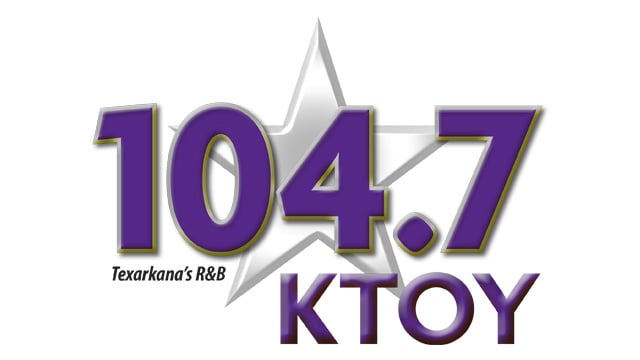By: Caitlin Dewey

A federal program built to improve nutrition for new mothers and kids is growing for the first time in over a decade, thanks to changes made during the pandemic.
Since its pilot program began in 1974, the Special Supplemental Nutrition Program for Women, Infants, and Children — better known as WIC — has provided food, nutrition support, and education to pregnant and postpartum women, toddlers, and infants through states, tribes, and territorial governments.
But difficulties accessing WIC, including frequent in-person appointments for education and monitoring, have long suppressed participation. On average, only half of the people eligible for WIC enroll, and between 2010 and 2021 nationwide caseloads fell 32%, according to the U.S. Department of Agriculture, which oversees the program.
That appears to be changing in most states, however — much to the relief of women and children’s health advocates, who say WIC has a proven track record of improving the health of women and children. In 2023, WIC experienced significant growth for the first time since the Great Recession of 2008, outpacing federal projections and reaching an estimated 6.6 million Americans.
“There are lots of opportunities right now, and we’re accomplishing things that I never thought we’d be able to get done,” said Ali Hard, the policy director for the National WIC Association, which advocates on behalf of state and local WIC agencies, and a former senior policy adviser at the Agriculture Department. “It’s terrible circumstances, of course — but I do think the pandemic led to a lot of really exciting innovation.”
But the expansion comes at a moment of enormous uncertainty for WIC. Many of the technology changes that made it easier to participate were authorized by temporary federal waivers during the pandemic, and Congress would need to change the law to extend them. And some Republican lawmakers argue that because the extra federal money during the pandemic was meant to cover the emergency, spending should return to earlier levels.
The innovations include sweeping changes to WIC benefits and services, which moved online in many states during the pandemic. The Agriculture Department authorized state and tribal agencies to conduct nutrition screenings and education by phone or video, and more than doubled funding for fruit and vegetable vouchers. Federal COVID-19 relief measures also funneled $390 million to WIC projects aimed at improving outreach and access.
Even states that have traditionally lagged in WIC enrollment, such as Missouri, Utah, and Wyoming, saw upticks in participation last year as policymakers and administrators moved to make the program more accessible.
“It’s wonderful news,” said Anne Strope, the administrative coordinator for Missouri WIC, which in early December reported a preliminary annual participation increase of more than 7%, to about 90,000 residents, for the 2023 fiscal year. “We’re really excited about the changes we’re making to get services back to Missourians who need them.”
But continuing to pay for the additional participants may be difficult. Unlike food stamps or Medicaid, WIC is not an entitlement program — it can only support additional participants if Congress allocates funding for them.
The program has traditionally enjoyed strong bipartisan support, and both Democratic- and Republican-controlled Congresses have funded WIC in full, covering everyone who applies and qualifies, for more than 25 years. The White House says that, due to rising food costs and increased participation, the program will need an additional $1 billion to continue covering everyone who qualifies in fiscal year 2025.
As federal budget negotiations drag on, however, some House Republicans have signaled a desire to hold WIC funding steady, with no increase to cover new participants. A series of continuing resolutions, passed to buy Congress time as it works out a comprehensive budget deal, also have maintained prior funding levels.
In a new analysis, the left-leaning Center on Budget and Policy Priorities estimated that states would need to reduce WIC participation by roughly 2 million people by September if Congress does not budget more. That could lead some agencies to create waitlists.
“Those cuts would be devastating,” said Pennsylvania state Sen. Judith Schwank, a Democrat, who recently sponsored bipartisan legislation aimed at improving WIC enrollment in her state. “With need as high as it is right now, we must not let that happen.”
A ‘really important’ program
WIC is unique among federal food aid programs in that it provides both resources to help households buy groceries and a suite of additional health and nutrition services. To qualify for WIC, applicants must not only meet federal income guidelines, but also show that they have a medical condition or diet that puts them at “nutritional risk.”
Qualifying participants must undergo a baseline nutrition screening, which typically includes bloodwork and a limited physical exam. They then receive a debit-type card that can be used to buy WIC-approved food items from participating retailers.
State agencies specify which brands and items families can buy, and in what quantities. WIC participants must check in periodically for ongoing nutrition education, counseling, and monitoring.
Multiple studies have linked maternal WIC participation with improved birth outcomes, lower infant mortality, and better child cognitive development. WIC participation also is associated with healthier diets for mothers and kids.
“It’s a really important source of nutrition support for low-income pregnant women, children, and families because it provides both nutrition education and the funds to purchase nutritious food,” said Dr. Aditi Vasan, a pediatrician at the Children’s Hospital of Philadelphia, where she has conducted research on participation in WIC.
But while WIC’s intensive model yields real health improvements, it also has created some barriers to participation, Vasan said. A mother with two young children might have to visit her WIC clinic as often as three times a month to maintain her status in the program.
Participants frequently report problems scheduling appointments, taking time off work, and accessing transportation to WIC offices. Once they receive benefits, they may face challenges finding stores that accept WIC or that stock adequate WIC-approved products.
In Arkansas, for instance — where only 35% of eligible mothers and children participate in WIC — more than a dozen counties have just one authorized WIC store. Determining which brands and sizes of food items are eligible for WIC can confuse participants.
“There’s an awful lot of in-person reporting, a lot of difficulty in using benefits,” said Schwank, the Pennsylvania state senator. “We want to make sure families have access to WIC — but why can’t it be more convenient?”
Pandemic changes
For policymakers and agencies working on that question, the pandemic proved both a blessing and a curse. The sudden closure of government offices exacerbated WIC’s long-standing challenges — and forced the country’s 89 WIC state agencies to rapidly adapt their services.
At the federal level, pandemic stimulus bills funneled $390 million to WIC modernization projects, including dozens of state and local efforts to improve WIC outreach and digital services. In 2021, Congress temporarily boosted the value of WIC benefits, granting as much as $41 additional per person per month to cover fruit and vegetable purchases.
Most importantly, said Hard, of the National WIC Association, Congress and the Agriculture Department permitted WIC offices to conduct health screenings and other appointments via phone or video call and issue benefits entirely by mail or electronic transfer.
“The continuing increase in participation is a testament to this model,” said Shannon Whaley, the director of research and evaluation at the Public Health Foundation Enterprises WIC program, which serves 180,000 people in Southern California.
“You can come in once or twice a year instead of four times a year or six times a year,” Whaley said. “You can get your services on your phone. You don’t have to leave your job to go to a WIC clinic — we can schedule your appointment during your lunch break. It has really transformed the program.”
But some states struggled to switch to telehealth and remote services — a consequence, in many cases, of the system’s technology. Since 2009, most states have adopted online or “mag stripe” processing systems that allow staff to load benefits to participants’ cards remotely.
Nine states, however — Arkansas, Louisiana, Missouri, New Mexico, Ohio, Pennsylvania, Texas, Utah and Wyoming — still use an older offline or “smart card” system, which requires that participants physically present their card at a WIC office to receive benefits, according to a research paper Vasan co-authored.
Participation plummeted in offline states during the pandemic. The 2021 paper by Vasan and four colleagues, published in the Journal of the American Medical Association, found that offline states experienced a 9.3% drop in WIC participation compared with states using online systems. In Missouri, enrollment fell a startling 19% between 2019 and 2021, federal data shows.
“It was frustrating,” said Strope, who oversees Missouri WIC. “Every step, every setback in the past three years, it was like, ‘OK — we just need to get to online as fast as we can.’”
Missouri is one of at least four “offline” states (Pennsylvania, Utah, and Wyoming are the others) transitioning to an online system, according to representatives for each state’s respective WIC agency. The Department of Agriculture is encouraging other states to follow suit.
“The pandemic killed the smart card,” said Johnny Sena, the vice president of product development at Custom Data Processing Inc., a contractor that provides technology services to more than half of the country’s WIC agencies. “When COVID shut everything down, states came up with interesting workarounds for the deficiencies they had — but it still put a damper on that [offline] model. It showed its disadvantages.”
Sena said the pandemic also yielded other innovations, such as new digital portals that WIC staff use to chat or text with participants, and a series of pilot projects to introduce online shopping to the WIC program. In February, the Agriculture Department proposed a new rule that would allow participants nationwide to shop online with their benefits. The department is currently reviewing public comments.
The future of WIC
But it’s unclear whether all the recent changes to WIC will remain long-term. Many of WIC’s pandemic adaptations, including telehealth and remote appointments, were authorized under temporary federal waivers. By September 2026, when waivers end, Congress will need to change the statute underlying WIC to make those changes permanent, said Hard, of the National WIC Association.
The Agriculture Department also would need additional funding from Congress to continue issuing enhanced fruit and vegetable vouchers, which advocates say are both extremely popular and critical to meeting participants’ nutritional needs. The National Academies of Sciences, Engineering, and Medicine recommended well before the pandemic that WIC boost its produce offerings, as part of a congressionally mandated review of the program in 2017.
In budget negotiations last year, however, House Republicans sought to claw back funding for the additional fruit and vegetable benefits, arguing they were intended to address an emergency need. Congressional Republicans didn’t increase dollar amounts for WIC in both their proposed 2024 budget and in short-term funding bills passed to avert a government shutdown this fall. The latest short-term bill runs out Jan. 19.
U.S. Rep. Andy Harris, a Maryland Republican who chairs the House subcommittee that oversees WIC’s budget, told fellow lawmakers in June that the USDA could draw on contingency funds to cover increased demand if needed. A spokesperson for Harris did not return requests for comment.
“It’s finally time to be responsible stewards of taxpayer dollars by rescinding these new government giveaways,” Harris told the subcommittee. “We must work to right-size programs, especially since the pandemic is over and President Biden has ended the public health emergency.”
Advocates and researchers fear, however, that the introduction of waitlists and other cost-cutting measures would undermine the progress WIC has made over the past three years. Far from growing too large, they argue, WIC is only just beginning to reach many of the women and children who need it.
“The reality is that this is not really the right time to talk about how to get more [eligible residents] coming into WIC,” said Whaley, the California researcher. “We need to shore up funding just to make sure that current participants can stay on the program.”
Stateline, like the Alaska Beacon, is part of States Newsroom, a nonprofit news network supported by grants and a coalition of donors as a 501c(3) public charity.


















